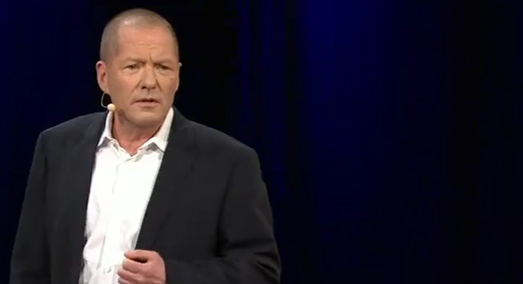We didn't need to reinvent the wheel. We just looked at what wasn't working and used the amazing power of the Internet to get around it.
我們不需要重新發明輪子。我們只是看到那些有問題的地方,并使用互聯網的神奇力量來繞開問題。
We set out to build a model that will cut down almost entirely the cost of higher education.
我們著手建立一種模式,它將削減掉高等教育的絕大部分成本。
And that's how we did it. First, bricks and mortar cost money.
我們是這樣做到的。首先,大樓需要花錢。
Universities have expenses that virtual universities don't. We don't need to pass these expenses on to our students.
大學有很多的開銷是虛擬大學所沒有的,我們不需要將這些開銷轉移到我們的學生頭上。
They don't exist. We also don't need to worry about capacity.
這些開銷不存在。我們也不需要擔心可容納的人數。
There are no limits of seats in virtual university. Actually, nobody needs to stand at the back of the lecture hall.
在虛擬大學里沒有座位數的限制。事實上,沒人需要站在講堂的后面。
Textbooks are also something our students don't need to buy.
我們的學生也不需要購買課本。

By using open educational resources and the generosity of professors who are putting their material up free and accessible,
使用開放的教學資源以及教授們的慷慨饋贈,很多教授把他們的教學材料免費公開,
we don't need to send our students to buy textbooks. All of our materials come free.
我們不需要讓我們的學生去購買課本,我們所有的材料都是免費的。
Even professors, the most expensive line in any university balance sheet, come free to our students.
甚至是教授,任何大學的收支表上最昂貴的一項,也對我們的學生免費。
Over 3,000 of them, including presidents, vice chancellors, professors and academic advisers from top universities
我們有超過3000位教師,包括校長、副校長、教授和學術導師,他們來自頂尖的大學,
such as NYU, Yale, Berkeley and Oxford, came on board to help our students. Finally, is our belief in peer-to-peer learning.
比如紐約大學、耶魯大學、加州大學伯克利分校、牛津大學,來幫助我們的學生。最后,是我們對于同伴學習的信念。
We use this sound pedagogical model to encourage our students from all over the world to interact and study together,
我們使用這個可靠的教學模式來鼓勵我們來自世界各地的學生一起互動并共同學習,
and also to reduce the time our professors need to labor over class assignments.
這同時也縮短了教授們需要花在課堂作業上的時間。












